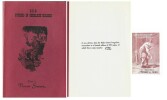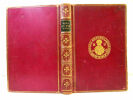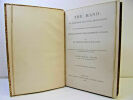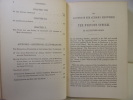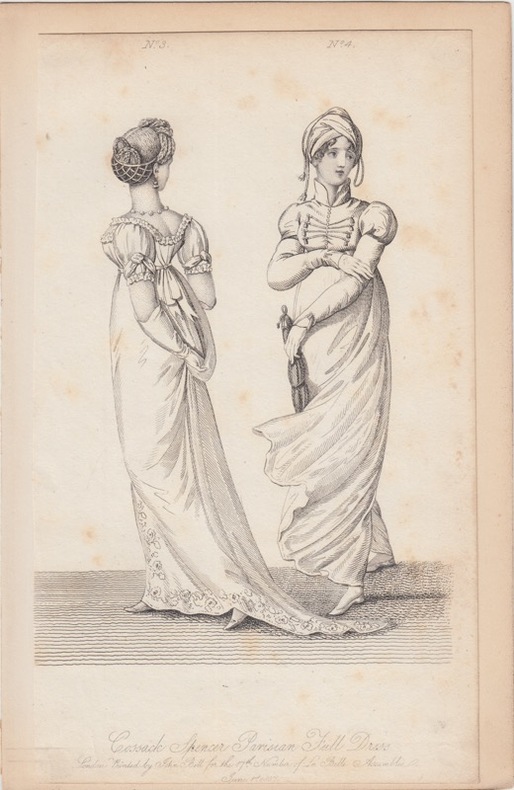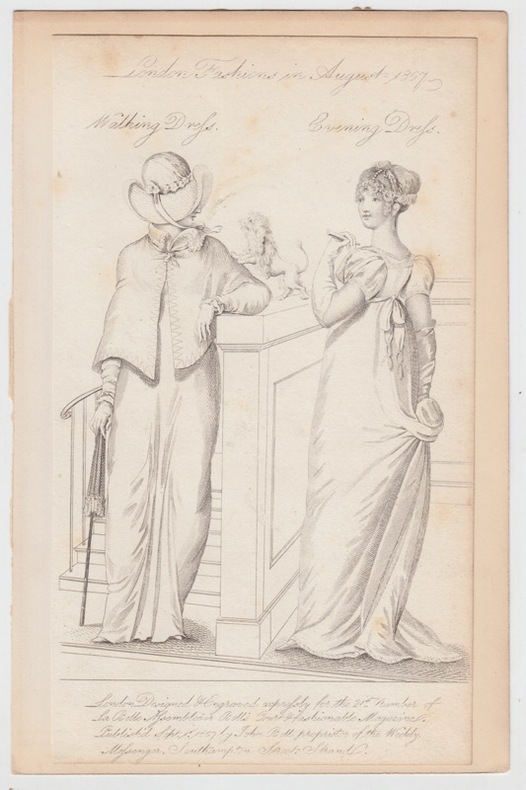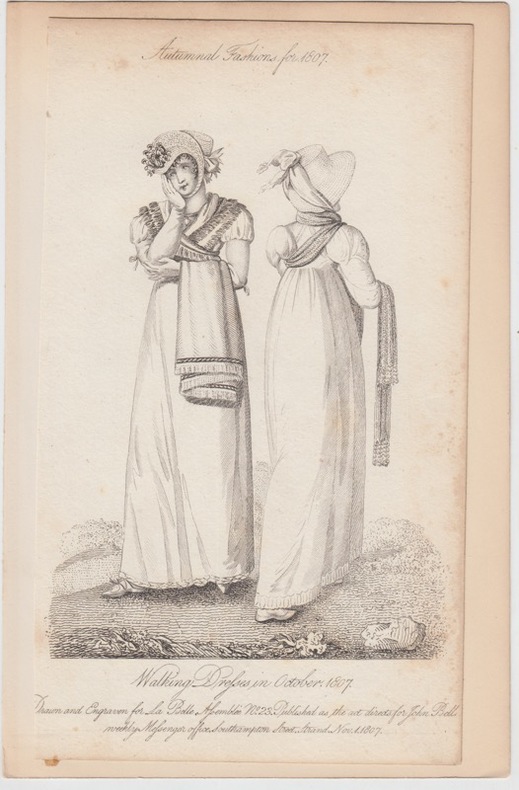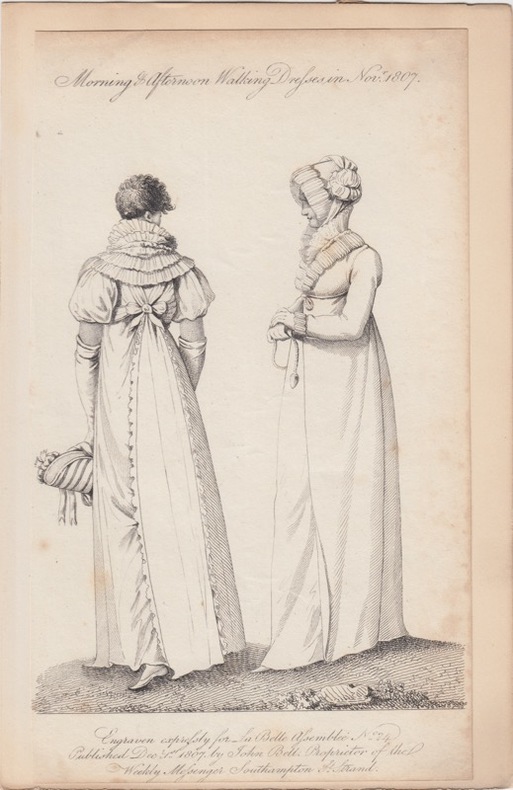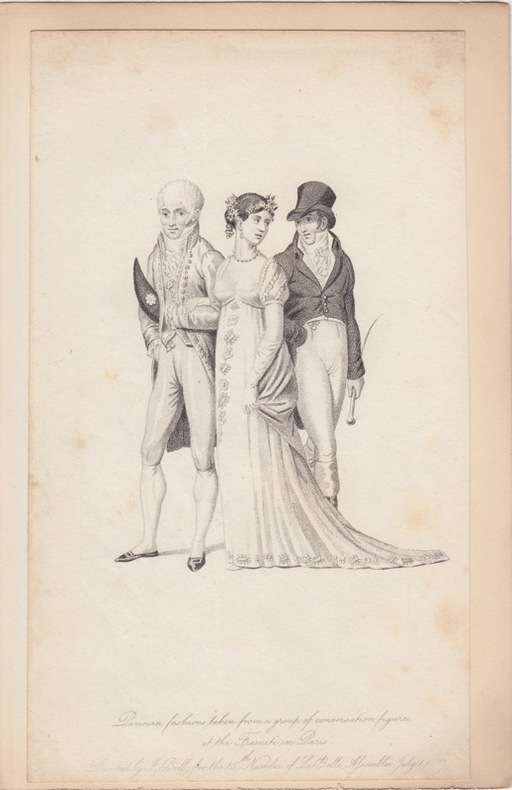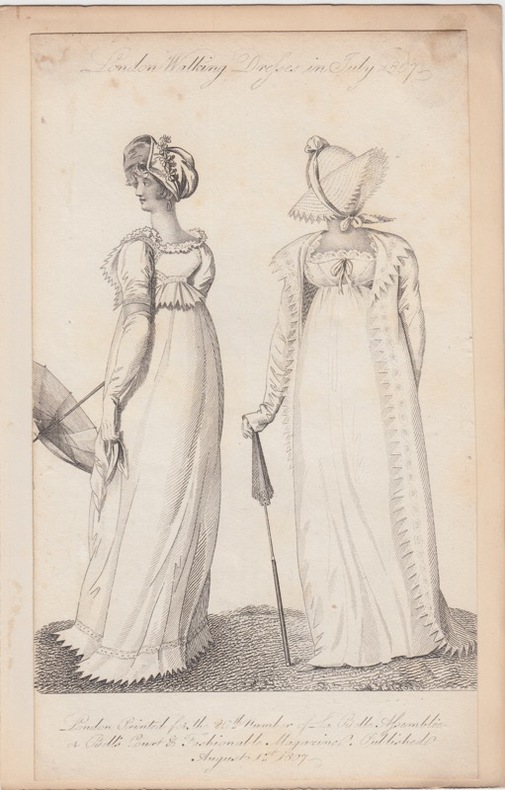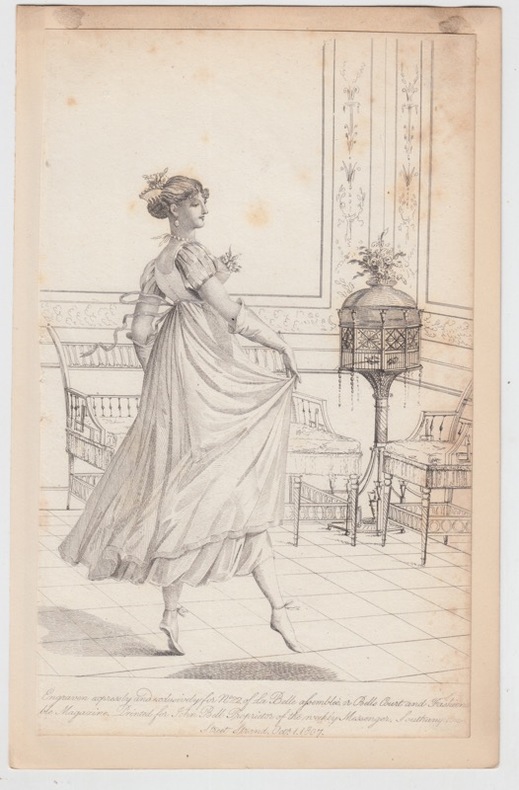598 books for « bell r c »Edit
-
Type
Book (634)
Engraving (8)
Music sheets (8)
New book (2)
Posters (2)
-
Language
English (6)
French (647)
Russian (1)
-
Century
17th (1)
18th (4)
19th (65)
20th (264)
21st (63)
-
Countries
Belgium (43)
Canada (2)
China (2)
Côte d'Ivoire (1)
Denmark (10)
France (514)
Germany (1)
Spain (1)
Switzerland (77)
United Kingdom (2)
United States of America (1)
-
Syndicate
ALAC (2)
CLAM (2)
ILAB (225)
NVVA (6)
SLACES (6)
SLAM (198)
Topics
- American literature (4)
- Ampelography - wines (4)
- Andersen hans christian (6)
- Animals (3)
- Archaeology (4)
- Architecture (3)
- Assembly (32)
- Atlas (3)
- Aviation (3)
- Biography (7)
- Books from the xviiith (2)
- Brittany (3)
- Carpenter (3)
- Children’s books (8)
- China (4)
- Cinema (3)
- Comic strip (28)
- Computer science (3)
- Contemporary look (3)
- Cooking (4)
- Education (2)
- England (7)
- English (13)
- Engravings (3)
- Fashion (5)
- Fielding helen (2)
- Fine arts (5)
- First edition (12)
- Flanders (23)
- Flowers (2)
- Fox (2)
- Genealogy (2)
- Geography (5)
- Gold (29)
- Guide books (3)
- Hackney (3)
- Haiti (2)
- History (21)
- Hugo victor (3)
- Illustrated books (2)
- Invertebrates (3)
- Ireland (2)
- Iron (3)
- Italian (2)
- Language (3)
- Latin (4)
- Law (4)
- Leisure (5)
- Literature (54)
- Magazine (34)
- Mathematics (7)
- Medicine (8)
- Melville herman (3)
- Méry (3)
- Morin edgar (2)
- Motor vehicle (9)
- Mountaineering climbing (2)
- Newspapers press (4)
- Paris (2)
- Philosophy (4)
- Physics (4)
- Plate (3)
- Policy (5)
- Reading vocabulary (2)
- Regency (32)
- Religions (9)
- Review (2)
- Reviews (3)
- Rock (2)
- Russia (2)
- Science fiction (2)
- Sciences (6)
- Scores (9)
- Sexuality (2)
- Socialism (2)
- Songs (7)
- Surgery (8)
- Tales (6)
- Tea (34)
- Theatre (3)
- Theology (5)
- Tibet (4)
- Tibet pc (4)
- Translation (6)
- Turkey - ottoman empire (2)
- United kingdom (7)
- Various (6)
- Viticulture (5)
- War (4)
- Wine (7)
- Woolf virginia (4)
- Zoology (4)
"BELL, ALEXANDRE (ALEXANDER) GRAHAM. - BELL, ALEXANDER GRAHAM. - ""THE GREATEST INVENTION I HAVE EVER MADE"": THE PHOTOPHONE.
Reference : 48149
(1880)
De la Production et de la Reproduction du Son par la Lumière. Mémoire lu à l'Association américaine pour l'avancement des Sciences, au Congrès de Boston, le 27 août 1880. (+) Les Récepteurs photophoniques de Sélénium. (Cette Note fait suite au M´wem...
Paris, G. Masson, 1880. 8vo. Contemp. hcalf, raised bands, gilt spine. Light wear along edges. Small stamps on verso of titlepage. In: ""Annales de Chimie et de Physique"", 5e Series, Tome 21. 576 pp. and 2 folded engraved plates. (Entire volume offered). Bell's paper: 399-430. With 11 fine textillustrations (showing the apparatus). Clean and fine.
First French version of ""On the Production and Reproduction of Sound by Light"" (the French version published in November and the English in October 1880) of this importent paper in which Bell describes his and Charles Sumner Tainter's, his assistent, invention of the Photophone or Radiophone, THE PROGENITOR OF MODERN FIBER OPTICS. This invention made possible the world's FIRST WIRELESS TELEPHONE MESSAGE, and the first call was sent from the Franklin Scool to the window of Bell's laboratory, some 213 meter away.Also with Breguet's importent paper on the Selenium used in the technology.""On June 3, 1880, Alexander Graham Bell transmitted the first wireless telephone message on his newly invented ""photophone."" Bell believed the photophone was his most important invention. The device allowed for the transmission of sound on a beam of light. Of the eighteen patents granted in Bell's name alone, and the twelve he shared with his collaborators, four were for the photophone. Bell's photophone worked by projecting voice through an instrument toward a mirror. Vibrations in the voice caused similar vibrations in the mirror. Bell directed sunlight into the mirror, which captured and projected the mirror's vibrations. The vibrations were transformed back into sound at the receiving end of the projection. The photophone functioned similarly to the telephone, except the photophone used light as a means of projecting the information, while the telephone relied on electricity."" (Mary Bellis).The first successful attempts were based upon the properties of selenium: ""The electric resistance of which varies with the degree of illumination to which it is exposed. Hence, given a transmitting instrument, such as a flexible mirror, by which the vibrations of a sound could throw into vibrations a beam of light, a receiver, consisting of sensitive selenium, forming part of an electric circuit with a battery and a telephone, should suffice to translate the varying intensities of light into corresponding varying intensities of electric current, and finally into vibrations of the telephone disk audible once more as sound."" (Prescott, George. Bell's Electric Speaking Telephone. 313 p.).
Traité théorique et pratique des ulcères
Paris, Th. Barrois, AX XI (1803), in-8, XX-394pp, Papier imitant le veau marbré havane, filet à froid en encadrement sur les plats, dos long orné de frises et fleurons dorés, Troisième édition française traduite sur la septième édition anglaise. Elle est augmentée de notes, de recherches sur la teigne, et d'observations nouvelles sur les tumeurs blanches des articulations de Bosquillon. C'est Benjamin Bell qui fut le premier à traiter les tumeurs rhumatismales des articulations par applications de sangsues ou de ventouses. Petits manques, quelques petites rousseurs, planche manquante. Couverture rigide
Bon XX-394pp.
( Sherlock Holmes - Littérature en Anglais - Arthur Conan Doyle ) - Harold Wilmerding Bell.
Reference : 31181
(2019)
Sherlock Holmes and Dr. John H. Watson. The Chronology of their Adventures.
Etats-Unis, Magico Magazine, New York 1984. In-8 reliure éditeur, simili cuir bordeaux, de 132 pages au format 23,5 x 15,5 cm. Couverture avec titre doré. Dos rond avec titre. Plats et intérieur frais. Chronologie des enquêtes de Sherlock Holmes et du Docteur Watson par Harold Wilmerding Bell. Préface inédite de S.J Richman. Indispensable ouvrage et un must pour tous les Sherlockiens.Petit tirage. Edition originale chez l'éditeur en superbe état général, proche du parfait. L'originale a été publiée en 1953.
Site Internet : Http://librairie-victor-sevilla.fr.Vente exclusivement par correspondance. Le libraire ne reçoit, exceptionnellement que sur rendez-vous. Il est préférable de téléphoner avant tout déplacement.Forfait de port pour un livre 7 €, sauf si épaisseur supérieure à 3 cm ou valeur supérieure ou égale à 100 €, dans ce cas expédition obligatoire au tarif Colissimo en vigueur. A partir de 2 livres envoi en colissimo obligatoire. Port à la charge de l'acheteur pour le reste du monde.Les Chèques ne sont plus acceptés.Pour destinations extra-planétaire s'adresser à la NASA.Membre du Syndicat Lusitanien Amateurs Morues
( Bandes Dessinées - Littérature en Anglais ) - Sammy Harkham - Chris Ware - Dan Zettwoch - Fabio - Helge Ruemann - Jordan Crane - Marc Bell - Souther Salazar - Collectif.
Reference : 28979
(2004)
Kramer's Ergot, tome 5.
Etats-Unis - Editions Gingko Press 2004. Fort in-4 broché non paginé, d'environ 300 pages, au format 27,5 x 3,5 x 22,5 cm. Belles couvertures illustrées. Dos rond illustré avec titre. Plats et intérieur frais. Revue de bande dessinée dirigée par Sammy Harkham avec de nombreuses participations, dont : Chris Ware, Dan Zettwoch, Fabio, Helge Ruemann, Jordan Crane, Marc Bell, Souther Salazar, etc. Superbe état général, proche du parfait. Très rare édition originale américaine, épuisée.
Site Internet : Http://librairie-victor-sevilla.fr.Vente exclusivement par correspondance. Le libraire ne reçoit, exceptionnellement que sur rendez-vous. Il est préférable de téléphoner avant tout déplacement.Forfait de port pour un livre 7 €, sauf si épaisseur supérieure à 3 cm ou valeur supérieure ou égale à 100 €, dans ce cas expédition obligatoire au tarif Colissimo en vigueur. A partir de 2 livres envoi en colissimo obligatoire. Port à la charge de l'acheteur pour le reste du monde.Les Chèques ne sont plus acceptés.Pour destinations extra-planétaire s'adresser à la NASA.Membre du Syndicat Lusitanien Amateurs Morues
( Sherlock Holmes - Littérature en Anglais ) - Arthur Conan Doyle - Christopher Morley - R.K. Leavitt - Elmer Davis - Jane Nightwork - Earle F. Walbridge - H.W. Bell - James Keddie - Harvey Officer - P.M Stone - Vincent Starrett - Richard D. Altick - Frederic Dorr Steele - Henry James Forman - Edgar W. Smith - F.V Morley.
Reference : 31072
(2019)
221B. Studies in Sherlock Holmes. ( Exemplaire ayant appartenu à Robert B. Frier en tirage limité à 350 exemplaires numérotés, avec ex-libris d'appartenance ).
Etats-Unis, Edited by Vincent Starrett 1956. In-8 broché, de 248 pages au format 21,5 x 14 cm. Couverture avec titre imprimé et illustration en noir. Plats et intérieur frais. Dos carré muet. Retirage d’un des ouvrages les plus célèbres de l’érudition Holmesienne, dont l'édition originale de 1940 est ardemment recherché. Ce recueil contient des textes de Arthur Conan Doyle, Christopher Morley, R.K. Leavitt, Elmer Davis, Jane Nightwork, Earle F. Walbridge, H.W. Bell, James Keddie, Harvey Officer, P.M Stone, Vincent Starrett, Richard D. Altick, Frederic Dorr Steele, Henry James Forman, Edgar W. Smith et F.V Morley. Nombreuses illustrations et documents en noir, hors texte. Indispensable ouvrage et un must pour tous les Sherlockiens. Exemplaire ayant appartenu à Robert B. Frier en tirage limité à 350 exemplaires numérotés ( n° 232 ) avec ex-libris d'appartenance. Signé par Robert B. Frier au verso de la couverture. Edition originale broché en état proche du neuf et en tirage limité. Rare et totalement épuisé.
Site Internet : Http://librairie-victor-sevilla.fr.Vente exclusivement par correspondance. Le libraire ne reçoit, exceptionnellement que sur rendez-vous. Il est préférable de téléphoner avant tout déplacement.Forfait de port pour un livre 7 €, sauf si épaisseur supérieure à 3 cm ou valeur supérieure ou égale à 100 €, dans ce cas expédition obligatoire au tarif Colissimo en vigueur. A partir de 2 livres envoi en colissimo obligatoire. Port à la charge de l'acheteur pour le reste du monde.Les Chèques ne sont plus acceptés.Pour destinations extra-planétaire s'adresser à la NASA.Membre du Syndicat Lusitanien Amateurs Morues
LE trésor DU LABYRINTHE
1946 1946. 5 CAMILLE BELL - LE TRÉSOR DU LABYRINTHE / 1946
Etat correct
"BELL, ALEXANDER GRAHAM. - ""THE GREATEST INVENTION I HAVE EVER MADE"": THE PHOTOPHONE.
Reference : 46951
(1880)
On the Production and Reproduction of Sound by Light. (Read before the American Association for the Advancement of Science, in Boston, August 27, 1880).
(New Haven), 1880. 8vo. Modern plain wrappers. In: American Journal of Science"", Third series, Vol. XX, No. 118, October 1880. Frontispiece-plate. Pp. 257-352 (entire issue offered). Bell's paper: pp. 305-324 and 11 textillustrations. A small stamp to verso of plate and the first leaf.
First printing of this important paper in which Bell describes his and Charles Sumner Tainter's, his assistent, invention of the Photophone or Radiophone, THE PROGENITOR OF MODERN FIBER OPTICS. This invention made possible the world's FIRST WIRELESS TELEPHONE MESSAGE, and the first call was sent from the Franklin Scool to the window of Bell's laboratory, some 213 meter away.""On June 3, 1880, Alexander Graham Bell transmitted the first wireless telephone message on his newly invented ""photophone."" Bell believed the photophone was his most important invention. The device allowed for the transmission of sound on a beam of light. Of the eighteen patents granted in Bell's name alone, and the twelve he shared with his collaborators, four were for the photophone. Bell's photophone worked by projecting voice through an instrument toward a mirror. Vibrations in the voice caused similar vibrations in the mirror. Bell directed sunlight into the mirror, which captured and projected the mirror's vibrations. The vibrations were transformed back into sound at the receiving end of the projection. The photophone functioned similarly to the telephone, except the photophone used light as a means of projecting the information, while the telephone relied on electricity."" (Mary Bellis).The first successful attempts were based upon the properties of selenium: ""The electric resistance of which varies with the degree of illumination to which it is exposed. Hence, given a transmitting instrument, such as a flexible mirror, by which the vibrations of a sound could throw into vibrations a beam of light, a receiver, consisting of sensitive selenium, forming part of an electric circuit with a battery and a telephone, should suffice to translate the varying intensities of light into corresponding varying intensities of electric current, and finally into vibrations of the telephone disk audible once more as sound."" (Prescott, George. Bell's Electric Speaking Telephone. 313 p.).
Exposition du système naturel des nerfs du corps humain
Paris, J.S. Merlin, 1825, in-8, XII-270-[2] pp, 4 pl. depl, Cartonnage bleu-vert à la bradel de l'époque, pièce de titre corail, 4 planches lithographiées par A. Bour, dans l'atelier de Langlumé, dont l'une représente l'oeil et ses différents muscles. Première édition française de cet ouvrage paru un an plus tôt à Londres. Traduction par Jean-Louis Genest, avec des observations inédites et un nouveau mémoire envoyés par l'auteur. Trois des cinq mémoires de cet ouvrage sont consacrés à l'oeil. Charles Bell (1774-1843), célèbre anatomiste écossais de l'époque, y explique notamment les usages des muscles et des nerfs de l'orbite. Cachets anciens (École impériale du service de santé militaire ; Hôpital militaire d'instruction de Strasbourg) et référence de bibliothèque dorée en tête du dos. Ex-libris de Jean Rouché. Cartonnage frotté. Rousseurs éparses, mouillures claires aux planches. Couverture rigide
Bon XII-270-[2] pp., 4 pl. depl.
Henneman, John Bell - Traduit de l'anglais par Patrick Galliou
Reference : 26188
ISBN : 2753514305
Olivier de Clisson et la société politique française sous les règnes de Charles V et Charles VI(La France du Nord-Ouest au XIVe siècle : crise et réalignement - La noblesse bretonne et la guerre de Succession - La réconciliation de Clisson avec la Couronne - Clisson au service de Charles V - La société politique à la cour de France : lémergence des Marmousets - Clisson et léchec du roi en Bretagne - La minorité du roi : oncles et Marmousets - La crise de 1387 et le triomphe des Marmousets - La frustration des Marmousets - Les Marmousets aux abois : la guerre en Bretagne et à la cour - Des Marmousets aux partisans dOrléans - Les dernières années de Clisson : les suites dun conflit pérenne)
RENNES, Presses Universitaires de Rennes - In-8, 15,5 x 24 cm - broché - Couverture illustrée - 352 pages - comme neuf - Envoi rapide et soigné
Dans cette remarquable analyse de la vie du connétable Olivier de Clisson, première étude scientifique approfondie publiée sur ce sujet depuis près de cent ans, léminent médiéviste américain quétait John Bell Henneman (1935-1998) met en perspective les problèmes, les ambitions et les réussites de Clisson en les liant au contexte social, politique et militaire de son temps. Henneman nous offre une présentation magistrale des évènements dans lesquels Clisson joua un rôle, éclairant ainsi en même temps la complexe histoire interne de la Bretagne et du royaume dans son ensemble, à une époque où la France tentait de recouvrer ses forces après les désastres qui avaient marqué le début de la guerre de Cent Ans. - Livraison a domicile (La Poste) ou sur simple demande en Mondial Relay.- ATTENTION: Colis recommandé uniquement sur demande (parcel recommended on request). Si vous désirez un remboursement équivalent au montant de votre achat, en cas de perte détérioration ou spoliation, demandez-nous expressément un envoi en recommandé ( if you wish a repayment equivalent to the amount of your purchase, in case of loss - deterioration or despoliation, ask us expressly for a sending recommended)- Conditions de vente : Les frais de port sont affichés à titre Indicatifs (pour un livre) Nous pouvons être amené à vous contacter pour vous signaler le surcoût du au nopmbre de livres achetés ou du poids de ceux-ci. - Conditions of sale : The shipping costs are displayed as an indication (for one book) We may need to contact you to inform you of the cost of the additional shipping depending on the weight and the number of books- Possibilité d'envoi par Mondial-Relay - Réception en boutique sur rendez-vous. Librairie G. PORCHEROT - SP.Rance - 0681233148
De la production du son par l'energie radiante. - [FIRST FRENCH PUBLICATION OF BELL'S PHOTOPHONE]
Paris, Imprimerie Gauthier-Villars, 1881. 8vo. Contemporary half calf, raised bands, gilt spine. Light wear along edges. Two small stamps on verso of title-page, and one on verso of last plate. In ""Annales de Chimie et de Physique"", Cinquiéme Series - Tome XXIII. 576 pp. + 3 plates. G. Bell's paper: pp. 397-432, pp. and 14 figures of experimental apparatus etc. The entiree volume offered. Fine and clean copy.
First publication of the first French translation of Bell's ""On the Production and Reproduction of Sound by Light: the Photophone"", originally published in 1880. The device allowed for the transmission of sound on a beam of light, and Bell himself regarded this, not the telephone, to be his most important invention.""In the importance of the principles involved, I regard the photophone as the greatest invention I have ever made"" greater than the telephone."" Bell said in a 1921 interview. The photophone was the world's first wireless telephone communication and thereby anticipated Marconi's invention with several years.The first successful attempts were based upon the properties of selenium: ""The electric resistance of which varies with the degree of illumination to which it is exposed. Hence, given a transmitting instrument, such as a flexible mirror, by which the vibrations of a sound could throw into vibrations a beam of light, a receiver, consisting of sensitive selenium, forming part of an electric circuit with a battery and a telephone, should suffice to translate the varying intensities of light into corresponding varying intensities of electric current, and finally into vibrations of the telephone disk audible once more as sound."" (Prescott, George. Bell's Electric Speaking Telephone. 313 p.).Bell was so excited by his invention and its possibilities that he proposed that his second daughter should bear the name of the invention: Photophone. Fortunately for her, her mother was not quite as enthusiastic about the invention.
Héva et la ferme de l'Orange. précédées d'une étude littéraire sur Méry par Georges Bell.
1857 Paris : Arnauld de Vresse, [1857] 1 vol.in12 reliure demi toile epoque,dos lisse titré, XXVII-248 + 4 (catalogue editeur janvier 1858) p.,bon etat,rousseurs
Georges Bell est le pseudonyme de Joachim-Pantaléon Hounau (1824-1889), critique littéraire au journal Paris. Fils de Henry Michel Hounau , docteur en médecine, et de Catherine Lever, il avait été condamné à la déportation par la Cour de Bourges à la suite de la journée du 15 mai 1848 ; après son retour en France, il se consacra entièrement à la littérature.- Joachim Hounau participa activement aux évènements de février 1848 et devint l'un des principaux rédacteurs de La Commune de Paris à l'instar de François Favre, rédacteur au Peuple de Proudhon. Un temps collaborateur au Mousquetaire d'Alexandre Dumas, Georges Bell y rédige des articles de critique littéraire et devint un ami intime de Gérard de Nerval.
BELL G.- PAGES DE LA VIE DE GERARD DE NERVAL L'Artiste, Journal de la Littérature et des Beaux-Arts.1855, texte en originale complet paru en livraisons.
1855 L'Artiste, Journal de la Littérature et des Beaux-Arts.1855,IN4 broché, en 4 livraisons complétes,fascicules en feuilles sous chemises jaunes, trés rare, réédité ÉTUDES CONTEMPORAINES -GERARD DE NERVAL PA R GEORGES BELL -PARIS VICTOR LECOU, ÉDITEUR 1855- LIBRARIE DE LA SOCIÉTÉ DES GENS DE LETTRES 10, vue du Bouloi,
Joachim Hounau participa activement aux évènements de février 1848 et devint l'un des principaux rédacteurs de La Commune de Paris à l'instar de François Favre, rédacteur au Peuple de Proudhon. Un temps collaborateur au Mousquetaire d'Alexandre Dumas, Georges Bell y rédige des articles de critique littéraire et devint un ami intime de Gérard de Nerval.
SPIEGEL VAN DE WERELD. DE GESCHIEDENIS VAN DE BEELDENDE KUNST.
Amsterdam, Athenaeum - Polak & Van Gennep , 2007 Gebonden, donkergrijs karton met zilveropdruk op rug, witte papieromslag, 195 x 265mm., 496pp., zeer uitgebreide kleurillustratie. ISBN 9789025363727.
Wat is de beeldende kunst en waar komt ze vandaan? Waarom bestaat ze en hoe verandert de kunst in de loop van de tijd? Op deze vragen geeft Julian Bell ons de antwoorden in het nieuwe standaardwerk over kunstgeschiedenis. Vanaf de eerste impulsen om ruw materiaal een vorm te geven tot en met het ontstaan van eigentijdse installaties hebben mensen de neiging gevoeld tot het maken van beelden. Stijlen en perioden zijn elkaar opgevolgd en het loont de moeite dwarsverbanden tussen schijnbaar ver uit elkaar liggende tradities te leggen. De schilder Bell gebruikt een heel scala aan voorwerpen, van dagelijks tot onbekend, om bloot te leggen hoe de kunst voortkomt uit onze gemeenschappelijke ervaring, hoe zij het menselijk tekort weerspiegelt, hoe zij als een spiegel laat zien wat ons werkelijk bezighoudt. Bell vermijdt de gebaande paden en hij kiest voor een letterlijk mondiaal perspectief. Vertaald door Victor Kuijper en Annelies Roeleveld. Nieuw boek.
"BELL, ALEXANDER GRAHAM. - THE PHOTOPHONE AND SPECTRAL ANALYSIS.
Reference : 48148
(1880)
Sur l'application du photophone à l'étude des bruits qui ont lieu à la surface solaire. Note présentée par M. Janssen au nom de Alex. Graham Bell.
(Paris, Gauthier-Villars), 1880. 4to. No wrappers. In: ""Comptes Rendus Hebdomadaires des Séances de L'Academie des Sciences"", Tome 91, No 18. Pp.(698-) 736. (Entire issue offered). Bell's paper: pp. 726-727.
First printing of the paper in which Bell speculates how his and Tainter's invention of the Photophone or Radiophone could have a wider use. He pondered the photophone's possible scientific use in the spectral analysis of artificial light sources, stars and sunspots. He later also speculated on its possible future applications, though he did not anticipate either the laser or fiber-optic telecommunications:""Can Imagination picture what the future of this invention is to be!.... We may talk by light to any visible distance without any conduction wire.... In general science, discoveries will be make by the Photophone that are undreamed of just now."" Not long after its invention laboratories within the Bell System continued to improve the photophone in the hope that it could supplement or replace expensive conventional telephone lines. Its earliest non-experimental use came with military communication systems during World War I and II, its key advantage being that its light-based transmissions could not be intercepted by the enemy.
BELL TELEPHONE MANUFACTURING COMPANY - Antwerpen - België ( editor ) :
Reference : 17845
Bell Telephone Manufacturing Company 1882 - 1982. Antwerpen - België. Een Belgische vennootschap geassocieerd met ITT .
.: 2. Antwerpen, Bell Telephone Manufacturing company, 1982, in-4°, ca (150) nn pp with many ills. (some in colour), brown publisher's cloth, no dustwrapper, but nice copy. Text in Dutch, boek in het Nederlands. Describes the history of the company which was founded by Graham Bell as the headquarters for Europe of the original Ma Bell of the USA. In 1992 the company was still part of ITT..
BELL TELEPHONE MANUFACTURING COMPANY - Antwerpen - België ( editor ) :
Reference : 40837
Bell Telephone Manufacturing Company 1882 - 1982. Antwerpen - België. Een Belgische vennootschap geassocieerd met ITT .
.: 0. Antwerpen, Bell Telephone Manufacturing company, 1982, in-4°, ca (150) nn pp with many ills. (some in colour), brown publisher's cloth, with dustwrapper, one page with marginal damage but still a nice copy. Text in Dutch, boek in het Nederlands. Describes the history of the company which was founded by Graham Bell as the headquarters for Europe of the original Ma Bell of the USA. In 1982 the company was still part of ITT..
The Hand; its mechanism and vital endowments, as evincing design and illustring the Power, wisdom and goodness of god
Illustrations: Illustrated throughout with text illustrations. Bell's classic work on the hand illustrated with his own small vignettes, discusses the hand's anatomy, phsyiology, bio-mechanics and compartive anatomy, as well as its utility and adaptive importance, the sense of touch, and related topics. Charles Bell (1774-1842), Scottish surgeon, anatomist, physiologist, neurologist, artist and philosophical theologian. he is noted for the difference between sensory nerves and motor nerves in the spinal chord. He is also noted for describing Bell's palsy. In 1829 Francis Egerton, eighth Earl of Bridgewater, died and in his will, he left a large sum of money to the President of the Royal Society of London. The will stipulated the money was to be used to write, print and publish one thousand copies of a work On the Power, Wisdom, and Goodness of God. The President of the Royal Society Davies Gilbert appointed eight gentlemen to write separate treatises on the subject. In 1833, he published the fourth Bridgewater Treatise, The Hand: Its Mechanism and Vital Endowments as Evincing Design. Bell published four editions of The Hand. [-See Wiki from more info]. Citations: Garrion-Morton: Book in very good condition, 22x15cm, leather, 260pp. Illustrations. London, Nelle & Daldy, York Street, 1870 ref/19
Cours complet de chirurgie. Traduit de l'anglais sur la quatrième et dernière édition par E. BOSQUILLON -- TRES BEL EXEMPLAIRE -- 6 VOLUMES (COMPLETE SET)
P., Barrois, 1796, 6 VOLUMES in 8 reliés en demi-basane à coins, dos ornés de filets dorés (reliures de l'époque), (quelques rousseurs), T.1 : (2), 16pp., 326pp., T.2 : 4pp., 167pp., T.3 : 4pp., 308pp., T.4 : 4pp., 250pp., T.5 : 7pp., 324pp., T.6 : 8pp., 318pp., 99 PLANCHES dépliantes REPRESENTANT DES INSTRUMENTS DE CHIRURGIE
---- PREMIERE EDITION FRANCAISE ---- TRES BEL EXEMPLAIRE ---- "BELL studied under the Monros at Edinburgh. He was surgeon to the Royal infirmary, Edinburgh, for 29 years. A System of surgery was produced while Bell was on the staff of the Royal infirmary and is his most famous work. The clarity and precision with which it was written provided a model for later nineteenth century surgical works. He improved the methods of amputation, introducing the triple incision of Bell". (Heirs of Hippocrates N° 1079 & Garrison N° 5579 1st english ed.)**355(7628).B2
La Belle Assemblée or, Bell's Court and Fashionable Magazine Addressed Particularly to the Ladies,John Bell, publisher
Reference : 25586
(1807)
Cossack Spencer Parisian full dress - june 1807,Fashions for 1807 from La Belle Assemblee N°17
1807 London,la belle assemblée fashionable magazine,J.BELL 1807 - black and white print,line engraving,
bon etat

La Belle Assemblée or, Bell's Court and Fashionable Magazine Addressed Particularly to the Ladies,John Bell, publisher
Reference : 25587
(1807)
London Fashion in August 1807,walking dress - Evening Dress from La Belle Assemblee Fashions for 1807 from La Belle Assemblee
1807 London,la belle assemblée fashionable magazine,J.BELL 1807 - black and white print,line engraving,
bon etat

La Belle Assemblée or, Bell's Court and Fashionable Magazine Addressed Particularly to the Ladies,John Bell, publisher
Reference : 25588
(1807)
Walking dress in October 1807, Autumnal Fashions for 1807 from La Belle Assemblee Fashions for 1807 from La Belle Assemblee
1807 London,la belle assemblée fashionable magazine,J.BELL 1807 - black and white print,line engraving,
bon etat

La Belle Assemblée or, Bell's Court and Fashionable Magazine Addressed Particularly to the Ladies,John Bell, publisher
Reference : 25589
(1807)
Morning & Afternoon Walking dress in Nov.1807, N°224 from La Belle Assemblee Fashions for 1807 from La Belle Assemblee
1807 London,la belle assemblée fashionable magazine,J.BELL 1807 - black and white print,line engraving,
bon etat

La Belle Assemblée or, Bell's Court and Fashionable Magazine Addressed Particularly to the Ladies,John Bell, publisher
Reference : 25590
(1807)
Parisian fashion taken ......
1807 London,la Belle Assemblée fashionable magazine,J.BELL 1807 - black and white print,line engraving,
bon etat

La Belle Assemblée or, Bell's Court and Fashionable Magazine Addressed Particularly to the Ladies,John Bell, publisher
Reference : 25591
(1807)
London Fashion in July 1807,walking dress - Evening Dress from La Belle Assemblee Fashions for 1807 from La Belle Assemblee
1807 London,la belle assemblée fashionable magazine,J.BELL 1807 - black and white print,line engraving,
bon etat

La Belle Assemblée or, Bell's Court and Fashionable Magazine Addressed Particularly to the Ladies,John Bell, publisher
Reference : 25592
(1807)
Walking dress in Nov.1807, N°22 from La Belle Assemblee Fashions for 1807 from La Belle Assemblee
1807 London,la Belle Assemblée fashionable magazine,J.BELL 1.10. 1807 - black and white print,line engraving,taches
bon etat

 Write to the booksellers
Write to the booksellers





